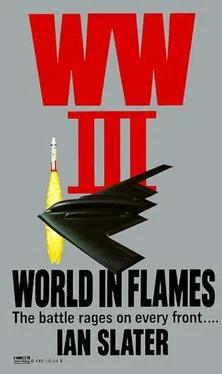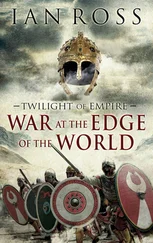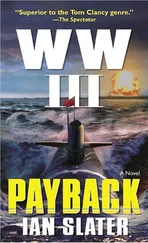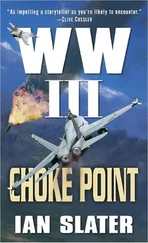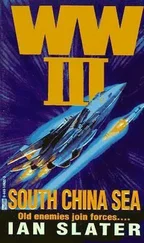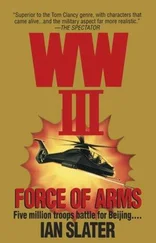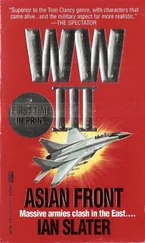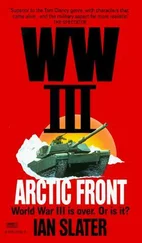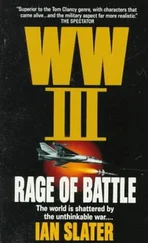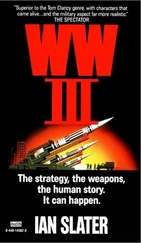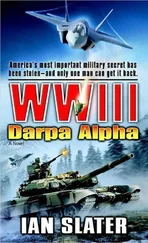“Very well,” answered Brentwood. “Steer four hundred feet ahead standard.”
Zeldman turned to the helmsman. “Helm all ahead standard. Diving officer, make the depth four hundred feet.”
They were just flattening out at three ninety when Brentwood heard, “Sonar contact! Possible hostile surface warship, bearing two seven eight! Range, twenty-four miles.”
Brentwood turned calmly to the attack island. “Very well. Man battle stations.”
“Man battle stations, aye, sir,” repeated a seaman, pressing the yellow button, a pulsing F sharp, slurring to G, sounding throughout the ship.
Brentwood turned to the diving officer. “Diving officer, periscope depth.”
“Periscope depth, aye, sir.”
Brentwood’s hand reached up, taking the mike from its cradle without him even looking. “This is the captain. I have the con. Commander Zeldman retains the deck.”
Beneath the purplish-blue light over the sonar consoles, the operator advised, “Range twenty-four point two miles. Possible surface hostile by nature of sound.”
“Up scope,” ordered Brentwood. “Ahead two-thirds.”
“Scope’s breaking,” said one of the watchmen. “Scope’s clear.”
Brentwood’s hands flicked down the scope’s arms, and, his eyes to the cups, he moved around with the scope. On the COMPAC screen Zeldman could see the dot, moving so fast at forty knots, it had to be a hydrofoil.
Brentwood stopped moving the scope. “Bearing. Mark! Range. Mark! Down scope.” Above the soft whine of the retracting periscope Brentwood reported, “I hold one visual contact. Range?”
“Twenty-two point three miles,” came the reply.
“Range every thousand yards,” ordered Brentwood.
“Range every thousand yards, aye, sir. Range forty-six thousand yards.”
“Forty-six thousand yards,” confirmed Brentwood. The possible hostile was almost within firing range. “Officer of the deck, confirm MOSS tube number.”
“MOSS in for’ard tube four, sir.”
“Very well. Angle on the bow,” said Brentwood. “Starboard three point two.”
“Check,” came the confirmation.
“Range?” asked Brentwood.
“Forty-five thousand yards.”
“Forty-five thousand yards,” repeated Brentwood. “Firing point procedures. Master four five. Tube one.”
“Firing point procedures, aye, sir. Master four five. Tube one, aye… solution ready… weapons ready… ship ready.”
“Con,” said Brentwood. “Not hostile. Repeat not hostile.”
It was a British E-boat with a similar noise signature, probably due to repairs on its prop, to that of a 180-foot-long Russian Nanuchka attack boat. It was the fact that the British E-boat had suddenly increased speed to sixty-seven kilometers, at least nine kilometers an hour faster than a Russian Nanuchka missile boat, that had saved her from being sunk by Roosevelt.
As he gave the order to stand down from battle stations and began tearing open the “orders” envelope, Robert Brentwood recalled that it was an NKA Nanuchka that had crippled his brother Ray’s fast-guided missile frigate off Korea.
* * *
With everyone still coming down from battle stations. Executive Officer Peter Zeldman kept a sharp eye on the planesmen and the other crew on watch, making sure the adrenaline didn’t find its way into overcompensation in the controls.
Brentwood tore open the envelope then, having read his instructions, spoke calmly, purposefully, into the PA.
“This is the captain speaking. USS Roosevelt has been ordered north through the GI Gap to hold stations beneath the ice cap. Duration will be seventy-five days unless otherwise ordered by SACLANT during rendezvous with TACAMO aircraft. This will mean that we’ll be in shallow waters part of the time, but we will have air cover from our bases in Greenland on our port flank as we head up, and some long-range ASW aircraft from Iceland on our starboard flank before we’re in the safety of Molly Malone and environs.” He paused, handing the envelope to Zeldman for countersignature. “Consequently, silent running is the order of the day. Soviets have been dropping buoy-attached hydrophone arrays all over the approaches whenever they can get through our air cover. Same as we do. I might as well tell you that there is no way we can completely avoid the arrays, which may send our signature to Soviet Hunter/Killers, but we can minimize the risk and could luck out. Once we’re under the ice, our safety margin increases. If, however, we cannot avoid being heard, we’ll be in a fight which we’re ready for. That is all.”
“Molly Malone?” asked a perplexed cook’s helper, his first haul on the Roosevelt. A chief of the boat poured himself another coffee, offering the pot around. “Molloy Deep,” he explained, “about seven hundred miles from the Pole. Over fifteen thousand feet straight down. Less chance of being detected.”
“You mean we just sit there?”
“You hayseed,” said a torpedoman’s mate. “Christ, three thousand feet’s our crush depth.”
“What I mean,” the chief told the newcomer, “is that there’s lots of deep water room so we can keep moving to different launch spots.” The chief quickly switching the subject to the chromium guard around the twin silex glass coffeepots. “Those are a bit loose,” he told the cook’s helper. “Better make sure they’re secure. Don’t want anything dropping. They’d hear it from here to Murmansk.”
“No sweat,” put in the cook. “Once we’re north of sixty-five, we’ll be under drift ice. North of seventy-five, we’re under pack. Have a roof over our heads, eh, Chiefie?”
“Don’t matter. Fix those guards.”
“Will do.”
As the chief walked out of the mess, the cook’s helper noted, “He doesn’t look too happy.”
“Ah,” retorted the cook, “probably put a packet on us going south — instead of north.”
“What’s wrong with north?”
“Friggin’ dangerous,” said a torpedoman’s mate. “Ain’t nothin’ right with it. Fuckin’ cold, too.”
In Control, Robert Brentwood told the navigator to instruct the Cray NAVCOMP to plot a course for latitude sixty-two degrees north, longitude thirty-two degrees ten minutes west, which would bring Roosevelt to a point over the Reykaanes Ridge, south of Iceland. This position would put them 430 miles southwest of Iceland’s North Cape before they headed for the narrow Denmark Strait of the GI — Greenland-Iceland— Gap, in parts no deeper than five hundred feet. From there Brentwood intended to execute a zigzag/weave pattern leading eleven hundred miles farther north to Koldewey Island at the southernmost extent of the pack ice that extended like a long, right-handed thumb pointing down from the Pole into the Greenland Sea.
In all, the war patrol would run west of Scotland to Reykaanes Ridge, then north beyond Koldewey Island to the fifteen-thousand foot deeps along the Fracture Zone around Spitzbergen Island, putting the Sea Wolf between Greenland’s northern reaches and northwestern Russia. In all, the journey of around three thousand miles would normally take her the best part of four days at her flank speed of thirty knots plus. But moving more slowly, at a third of her speed, so the cooling pumps would not have to work so hard, therefore limiting the sub’s noise, the slower trip, while navigating through the ice fields and the southward-flowing East Greenland Current, would take around thirteen days.
While the Greenland-Iceland Gap was known to mariners at large as the GI Gap, to the NATO sub crews it was the “Gastrointestinal Tract”—the one where ships’ quartermasters recorded a higher than usual consumption of Pepto-Bismol as drift ice, calved from the pack ice, ground together all around you like a giant grinding his teeth. It also added ominous and forbidding tones to the sound waves coming in via the Sea Wolf’s towed passive sonar array, which was integrated with the conformal bow-mounted passive hydrophones. Which meant it could confuse sonar operators.
Читать дальше
